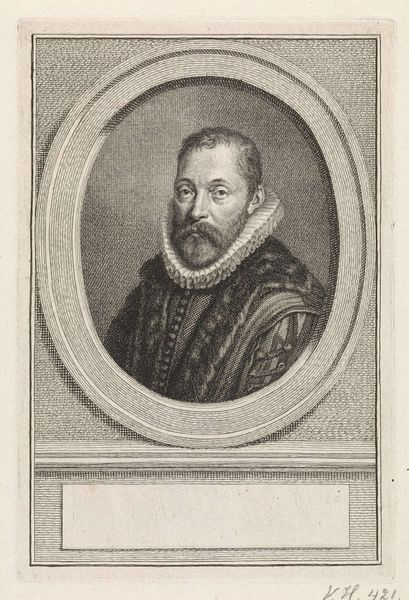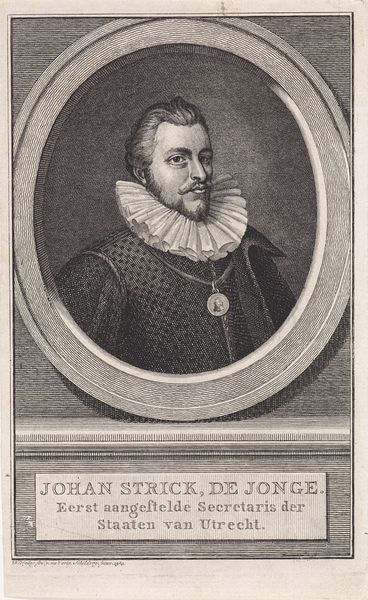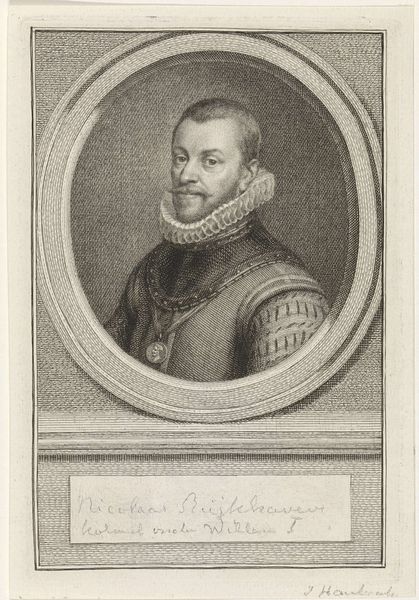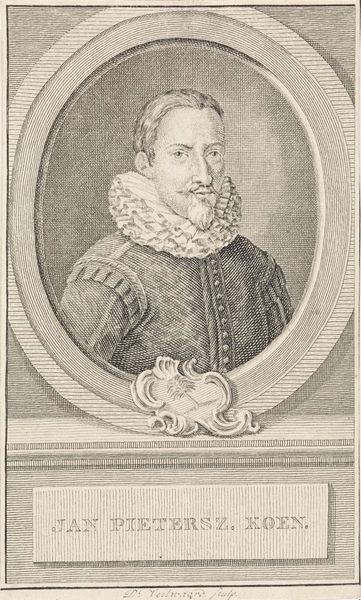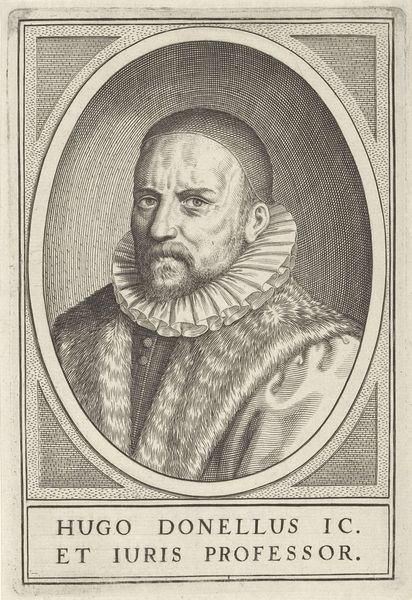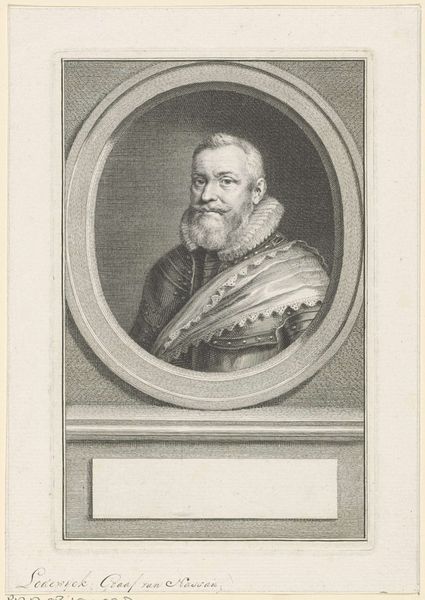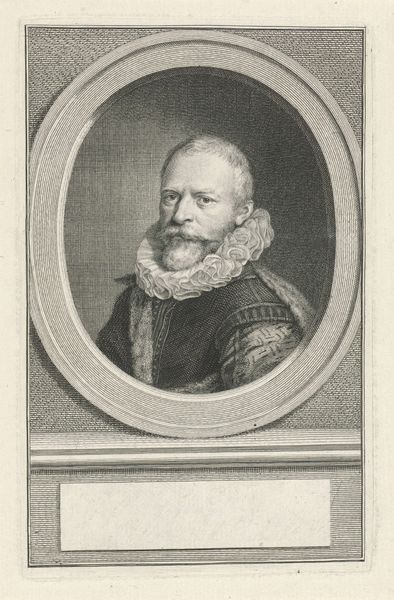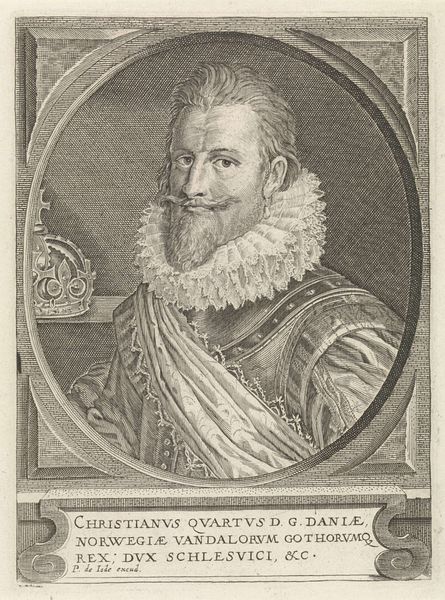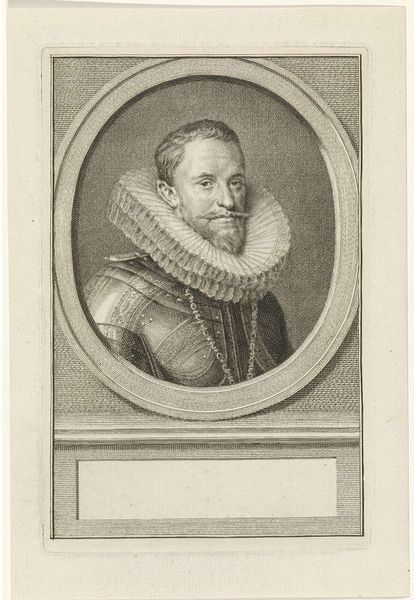
Dimensions: height 175 mm, width 117 mm
Copyright: Rijks Museum: Open Domain
Editor: Here we have Jacob Houbraken's engraving, "Portret van Filips II, koning van Spanje," made between 1771 and 1773. It’s currently held at the Rijksmuseum. The detail achieved through engraving is incredible; it gives a real sense of the King’s... gravity, I suppose you could call it. What do you see in this piece, from your perspective? Curator: I see a meticulously constructed icon, a distillation of power through visual cues that resonate across centuries. Note the oval frame – a classical reference, immediately placing Philip within a lineage of notable figures. What do you make of his gaze? Editor: It's averted, not directly engaging with the viewer. Almost… melancholic? Curator: Precisely. And consider the implications. A direct gaze signifies confidence, dominion. By averting his eyes, is Houbraken hinting at the burdens of kingship, or perhaps something more critical? The fur collar around his neck suggests wealth, power but its closeness also represents confinement. Think of Philip's role in the Dutch Revolt – does the portrait evoke his Spanish court or his fractured legacy in the Netherlands? Editor: So the symbols can be interpreted in different ways depending on the viewer's context? Curator: Exactly. The symbols exist in a complex network. This portrait exists as cultural memory of empire, a representation carefully mediated. Editor: This has really opened my eyes to how much a portrait can communicate beyond just a likeness. I’ll never look at historical portraits the same way again. Curator: And I hope you recognize the importance of cultural baggage each generation projects on these symbols, redefining and reimagining the past to give meaning to the present.
Comments
No comments
Be the first to comment and join the conversation on the ultimate creative platform.

